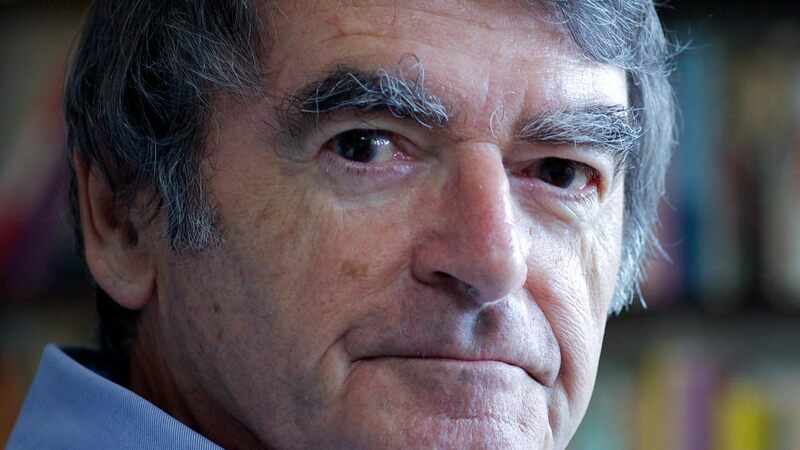You are viewing your 1 free article this month. Login to read more articles.
My experiment with Substack
Last year, at almost the same time, my mother died and I became a father. This was recorded, day by day, sometimes hour by hour, in "A Writer’s Diary" – a Substack that came out as a book on 1st January of the following year. Depending how you saw it, I was either very fortunate or very unfortunate to have started writing the day I did.
The whole thing was very raw, very real. But the book was a work of fiction, and the year was, too.
Almost everything in my Substack happened, and almost none of it happened when I said it did.
The year 2022 wasn’t 2022 but 2004 and 2012 dovetailed.
Literal fact; temporal fiction.
This may sound complex, but the first-time experience of "A Writer’s Diary" was simple. What I went through that year was a lot, and my readers went through it with me. They were the friendly ghosts hovering above my desk, reading over my shoulder. Everything was there for them to see, in the next timed email they received, or the next post that appeared on the website. Me collapsed, me flying.
In fact, I’d finished writing the 365 days by the time I heard of this possible platform.
I wasn’t a first adopter. In September 2021, the Guardian published an article titled "What is Substack and why is it proving so popular?" Among those mentioned as already using it were Chuck Palahniuk, Patti Smith and Salman Rushdie. I was intrigued, signed up, found the interface very simple, did some test posts. Then I asked my agent and publisher if it was okay for me to give away my next book for free before it came out? They said fine.
What I recognised was the chance to fulfil a longtime ambition: to write something that, for the reader, happened in real time. No spoilers. No checking the last page to see whether it’s a happy ending. And if there’s a pause in the action, a blank day, then you have to wait to see what happens next. Genuine suspense, not just page-space you can skip.
It was, I hoped, a new kind of hyperrealism. As powerful, as moving, as involving a reading and living-along-with experience as I could imagine. Literal fiction; temporal fact.
Of course, I can explain it in retrospect, and in my postings the December before the diary year began, I also explained it in prospect. But once it came to 1st January, I didn’t want to break out of character.
This meant at least one reader cancelled their paid subscription – enraged I wasn’t mentioning the invasion of Ukraine, but instead focusing on the minutiae of the objects on my desk. (Paid subscribers get every single post; non-paid miss a few, or more than a few. That’s Substack’s way of creating income for writers.) This reader thought I was being callous, rather than that I was existing in a different, sealed time. I had some serious doubts but stuck with it.
And as the year went on, I knew the form was working. Readers I met had a closer relation to me and to the writing than ever before. Rather shocked, friends congratulated me and my partner on the pregnancy. Students said I could cancel their tutorial, if I needed a little time. There had been a suspension of disbelief I couldn’t have achieved on the printed page.
This was the main reason I didn’t allow comments. To have someone come in, below the line, even with supportive stuff, would have broken the ghostly reader out of that intimate, shared time, that sense of privacy.
Above all, that’s what Substack can do – create a closeness between writer and reader that is vanishing from the internet generally. On X or TikTok, everyone is defensively or offensively being their public self. They’re adopting the correct stance, fighting for their side. And there are sides.
On Substack, many of your readers are giving small amounts of money (say, $5 a month) to support your work. They want you to make more. And by checking your stats, or their comments, you can see what they like and what they’re indifferent to. If they hate you, they’re gone pretty soon.
"A Writer’s Diary" continues to go out every single day, but has moved on. A literary love affair and arrest for activism, these are what’s happening now(ish).
I’m not going to claim I’m doing Substack right. But I am doing it as inventively and intuitively as I can. And I hope that’s exciting for my loyal readers.
And so if I were to give advice to anyone thinking of starting a Substack, it would be: plan ahead. It’s not enough to have three or four good blog posts written and ready to go. Not unless you can foresee at least another 10 coming down the line.
I always envied the veteran journalist Alistair Cooke for his radio broadcast "Letter from America". It was weekly and, given the stateside subject matter, he was never going to run out of material. Chances are, unless you have something similarly unfolding (whether it’s US politics, the wine business or your own neuroses), you will find missed weeks turning into missed months. And you can’t not be there, regularly. That’s what your friendly ghosts expect of you.

















